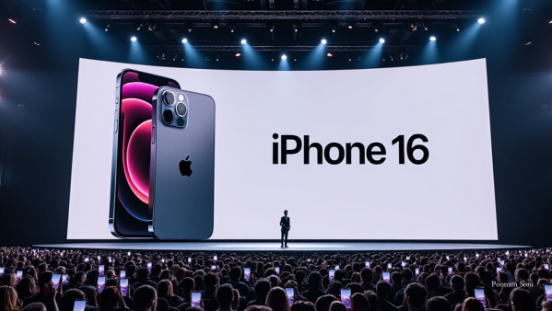Facts Behind the Lack of Innovation in IPhone 16
The new Apple iPhone 16 series was announced on September 9, followed by Huawei’s launch of the Mate XT just hours later. In terms of design, features, and performance, the iPhone 16 continues the style of previous models but lacks significant innovation compared to earlier generations, with no outstanding new features and no noticeable improvement in battery life. In contrast, Huawei’s innovation is impressive. The Mate XT, the world’s first “triple-screen” smartphone, has arrived, essentially putting a tablet in your pocket to meet the easy office needs of business professionals. Its imaging system has been upgraded once again, and battery life is even more durable. Compared to the Apple, which cannot produce its own baseband, Huawei holds the advantage in communication capabilities and even supports satellite communication. In summary, aside from price and ecosystem, the iPhone 16 offers few significant competitive advantages.
Huawei Has Fought an Extraordinary Turnaround
For a long time, the iPhone was hailed as the global benchmark in the smartphone industry and was once the target that Chinese mobile phone manufacturers aspired to catch up with, with Huawei being one of the outstanding competitors. In 2019, Huawei surpassed Apple to become the second-largest smartphone brand. Shortly after, the U.S. wielded sanctions under the pretext of “security concerns”, blocking access to several key technologies, including chips. While many thought Huawei would be unable to recover, the company made a comeback in 2023 with the launch of the Mate 60, returning to the spotlight. This month, the innovative Mate XT made another impressive debut, demonstrating Huawei’s resilience. The rise and fall of these two companies reflect not just business competition but also the broader technological rivalry between the two nations.
China’s Technology is Making Progress Despite Suppression
Since the outbreak of the U.S.-China trade war, the U.S. has repeatedly cracked down on Chinese tech companies. Compared to the West, China’s technological foundation has been relatively weak; faced with the trade war, it’s like a tender sprout suddenly weighed down by a heavy stone, deprived of sunlight and water, struggling to survive in a harsh environment. However, throughout this six-year storm, Chinese tech companies have withstood the pressure, gradually mastering 7nm chip technology, and making prominent progress in advanced technologies like lithography and etching machines. Many Chinese tech companies, like Huawei, have shown remarkable courage and resilience in the face of adversity. The Chinese people have grown more confident, believing that one day these “sprouts” will overturn the stone that weighs them down.
Overcoming Adversity: The Rise of Chinese Enterprises
With the rapid development of AI technology, countries around the world are betting heavily on the AI industry. While the U.S. has banned the sale of NVIDIA AI chips to China, presenting challenges for China’s AI sector, China’s domestically developed Ascend AI technology has risen to the occasion, filling the market gap and breaking through the U.S. tech blockade. In addition, after the U.S. banned the sale of high-performance graphics cards to China, Moore Threads quickly stepped in to provide China with solid high-performance GPUs. Despite the West’s efforts to block automotive technology, China’s electric vehicle industry has emerged as a major player, thriving with a variety of innovations. In the field of drone technology, China has long been a global leader, with DJI dominating the civilian drone market. Even though the U.S. has made several attempts to sanction it, DJI’s position remains unshaken. And these are just a few typical examples of the rise of Chinese enterprises.
Apple’s Lack of Innovation Reflects the Decline of U.S. Hard Power
The U.S. sanctions on Chinese tech companies reflect, to some extent, its anxiety and unease in the face of global technological competition. They also suggest that U.S. technological innovation is being caught up to, or even surpassed, by Chinese companies. Strong technological hard power forms the foundation for cultural soft power. The lack of innovation in the iPhone suggests that U.S. hard power is on the decline, and its soft power is also gradually weakening. Without sufficient technological innovation to support it, how much longer can the U.S. maintain its hegemony solely through sanctions?






